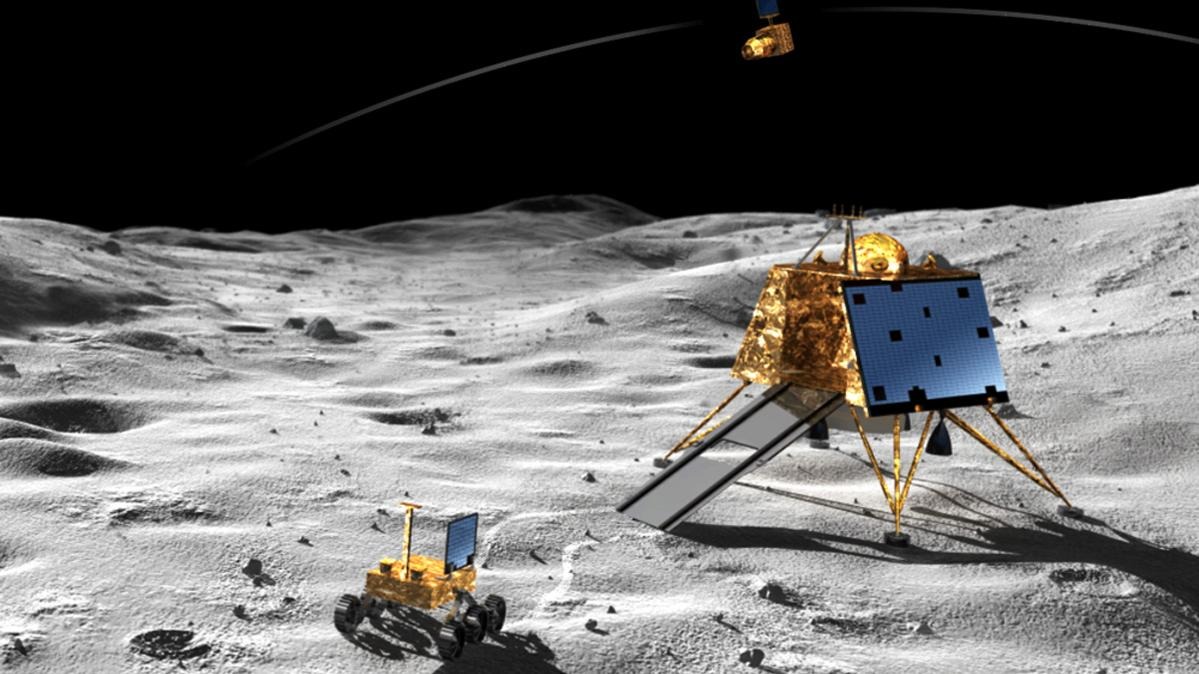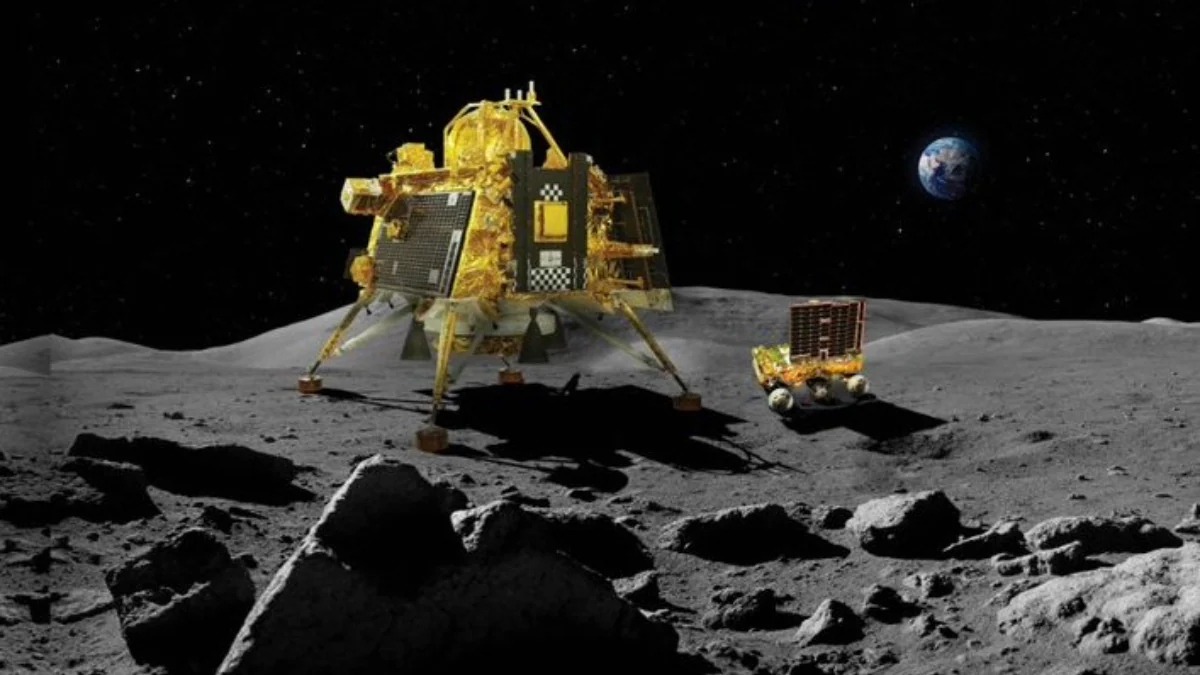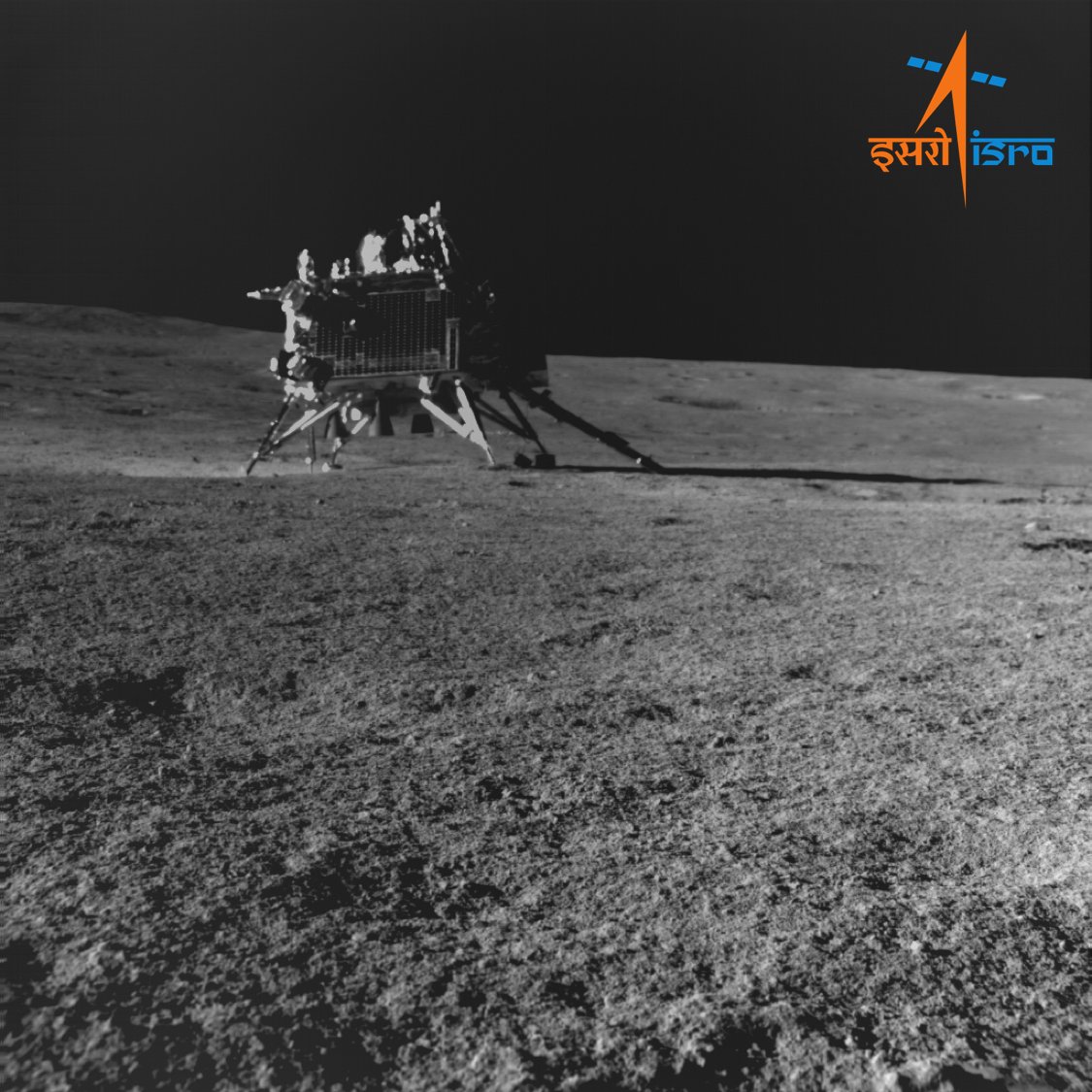Scientists from the Indian Space Research and Development Organization (ISRO) waited for the next important event after landing on the Moon. The Sun began to rise over the landing site of the Chandrayaan-3 mission, located near the south pole of the Moon. This expected sunrise promises to bring new data about the mission, which will add emotion and resonance to the entire scientific community.

The news of the beginning of this sunrise came after the Vikram mission lander successfully landed on the surface of the Moon about 600 km from its south pole on August 23. For 14 Earth days, corresponding to one lunar day, Vikram was powered by solar panels. However, on September 5-6, a lunar night began at the landing site, which led to a power termination. This event turned off the Pragyan six-wheeled lunar rover, which was also powered by solar energy.
Chandrayaan-3 Mission:
Vikram Lander is set into sleep mode around 08:00 Hrs. IST today.Prior to that, in-situ experiments by ChaSTE, RAMBHA-LP and ILSA payloads are performed at the new location. The data collected is received at the Earth.
Payloads are now switched off.… pic.twitter.com/vwOWLcbm6P— ISRO (@isro) September 4, 2023
Will Vikram and Pragyan wake up?
In early September, ISRO announced that Vikram’s instruments – CHASTE, RAMBHA-LP and ILSA – were turned off until the next sunrise. Vikram will go into sleep mode next to Pragyan until solar energy feeds their batteries again. ISRO hopes that the resumption of the mission will begin on September 22. So communication and control over the device should be restored today.

The future of the Chandrayaan-3 mission remains uncertain. But ISRO scientists are ready to take on the challenge of resuscitating the spacecraft and continuing the mission after the end of their expected service life. However, it is worth noting that in order to restore the operation of the spacecraft, it is necessary that the temperature on the Moon during the day rise to a certain threshold to provide the necessary energy for the resumption of activity. Although both of them are able to withstand ultra-low temperatures up to -200 °C.
Powered by the Sun in low-light conditions
It is important to note that the Sun does not actually “rise” or “set” over the lunar poles because, due to the peculiarities of the Moon’s motion relative to the Earth, it is never more than 1.5° above or below the horizon, as it happens on Earth. Due to the position and inclination of the Moon, sunlight always passes through the horizon at both the North and South Poles, so some craters are never fully illuminated, and therefore have eternally shaded areas.

Vikram landed in the highlands, so it receives relatively more sunlight, which provides it with energy for a long time of operation. The solar panels of the lander have a capacity of up to 738 watts of energy, while the panel of the Pragyan rover can generate only 50 watts of energy.
Fourth country in the list of conquerors of the Moon
The Chandrayaan-3 mission launched from the Satish Dhawan Space Center in Sriharikot aboard the LVM3 rocket on July 14, and thanks to the successful landing, India became the first country to land at the south pole of the Moon. India also became the fourth country to make a safe landing on the Moon after the United States, the USSR and China.
All these events open up new prospects for exploring the Moon and expanding our knowledge of space. Despite the difficulties and challenges, ISRO faces an exciting task of exploring the Earth’s nearest neighbor, which can lead to incredible discoveries and achievements in the future.
Earlier we reported on how Elon Musk compared Chandrayaan-3 with Interstellar.
According to republicworld.com
Follow us on Twitter to get the most interesting space news in time
https://twitter.com/ust_magazine
